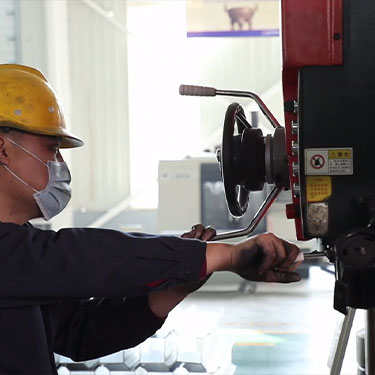
Nov . 20, 2024 04:12
Back to list
pressure reducing regulators
Understanding Pressure Reducing Regulators
Pressure reducing regulators (PRRs) are essential devices employed across various industries to ensure safe and efficient operation of systems involving gases and liquids. By controlling the pressure of these fluids, PRRs help maintain optimal conditions, preventing potential hazards and enhancing performance. This article explores the working principles, applications, and advantages of pressure reducing regulators.
What is a Pressure Reducing Regulator?
A pressure reducing regulator is a mechanical device designed to reduce the inlet pressure of a gas or liquid to a lower, more manageable outlet pressure. It typically consists of a valve mechanism, a diaphragm, and a spring. The diaphragm responds to the downstream pressure, and as it senses an increase, it adjusts the valve to decrease the flow, thus stabilizing the outlet pressure.
The operation can be understood in two phases when the inlet pressure exceeds the set point, the diaphragm moves against the spring tension, closing off the valve; conversely, when the outlet pressure drops below the desired level, the diaphragm allows more fluid to pass through, thereby raising the pressure.
Applications of Pressure Reducing Regulators
PRRs find extensive applications in both residential and industrial settings
1. Industrial Processes In manufacturing plants, PRRs are critical in processes requiring precise pressure control. For example, the chemical industry relies on these regulators to ensure that reactions occur at specific pressures, preventing over-pressurization that could lead to equipment failure or safety incidents.
2. Gas Distribution Natural gas utilities employ PRRs to manage the pressure of gas being distributed to homes and businesses. This ensures that the gas arrives at a safe pressure, avoiding risks of leaks or explosions while maintaining efficient energy delivery.
pressure reducing regulators

3. Water Systems In municipal water systems, PRRs regulate the water pressure flowing through pipes. This avoids excessive pressure that can cause burst pipes and ensures consistent delivery of safe drinking water.
4. Medical Applications In healthcare settings, PRRs are crucial for controlling the pressure of gases supplied to patients, such as oxygen and anesthetic gases, ensuring that patients receive the correct dosage without risk of injury.
Advantages of Using Pressure Reducing Regulators
1. Safety One of the primary benefits of pressure reducing regulators is enhanced safety. By controlling pressure effectively, they help prevent accidents caused by over-pressurization, such as explosions and equipment damage.
2. Efficiency PRRs contribute to operational efficiency by maintaining consistent pressure levels, minimizing energy wastage and ensuring optimal performance of equipment and processes.
3. Regulatory Compliance Many industries are subject to strict regulations concerning pressure limits. Using pressure reducing regulators helps organizations comply with these legal requirements, thereby avoiding penalties and enhancing reputation.
4. Cost-Effectiveness By preventing damage to equipment and reducing energy costs, PRRs offer a cost-effective solution in the long run. They can significantly lower maintenance costs and extend the lifespan of machinery and infrastructure.
Conclusion
Pressure reducing regulators play a vital role in ensuring the smooth operation of various systems involving gases and liquids. Their ability to maintain safe, efficient, and consistent pressure levels makes them invaluable across numerous industries, from manufacturing to healthcare. As technology continues to advance, the design and functionality of PRRs are likely to improve, enabling even greater safety and efficiency in fluid control systems. Understanding the significance of these devices is crucial for engineers, system designers, and safety professionals alike. In a world where fluid dynamics are integral to countless applications, pressure reducing regulators stand as a cornerstone of safety and efficiency.
Next:
Latest news
-
Safety Valve Spring-Loaded Design Overpressure ProtectionNewsJul.25,2025
-
Precision Voltage Regulator AC5 Accuracy Grade PerformanceNewsJul.25,2025
-
Natural Gas Pressure Regulating Skid Industrial Pipeline ApplicationsNewsJul.25,2025
-
Natural Gas Filter Stainless Steel Mesh Element DesignNewsJul.25,2025
-
Gas Pressure Regulator Valve Direct-Acting Spring-Loaded DesignNewsJul.25,2025
-
Decompression Equipment Multi-Stage Heat Exchange System DesignNewsJul.25,2025

